Stonier, Nuttier, Cloth-ier
I was comfort watching old episodes of Nigella Lawson’s Christmas Cooking Specials thinking that I might be inspired to get into my old holiday baking, wrapping, decorating frenzy (. . . or maybe just watch Nigella do it and weave instead . . .) and she said something that caught my ear. She said that according to the Russian formalists, the purpose of art was to make “stone stonier”, and she was (amusingly) applying that principle to toasting nuts, i.e. the purpose of toasting nuts is “to make nuts nuttier”. I found the passage she was referring to:
If we start to examine the general laws of perception, we see that as perception becomes habitual, it becomes automatic. Thus, for example, all of our habits retreat into the area of the unconscious automatic…[Art] exists that one may recover the sensation of life; it exists to make one feel things, to make the stone stony. The purpose of art is to impart the sensation of things as they are perceived and not as they are known. The technique of art is to make an object “unfamiliar,” to make forms difficult, to increase the difficulty and length of perception because the process of perception is an aesthetic end in itself and must be prolonged. Art is a way of experiencing the artfulness of an object; the object is not important. Viktor Shlovsky
and of course my mind went immediately to cloth and weaving. I have always loved and been inspired by cloth in general, but I marvel at handwoven cloth (and even more so hand-spun/handwoven cloth) and have wondered why it has such a different impact on me. This quote helps me get closer to an answer. To me, handwoven cloth is cloth-ier than it’s commercial/industrial counterparts. The best handwoven cloth has an organic quality that subtly reveals the hidden process of it’s creation.
I was trying to think of other material items that are also made “more so” by being non-industrial/machine made. Have you ever seen clapboarding on very old houses? It isn’t quite uniform, there are very subtle undulations in the lines of the boards that immediately bring the woody origins of the clapboarding to the fore. I see clay and process in my handmade ceramic mugs every day, and the hand cuts on the beams in my old, old barn, not only draw me into their origins as trees, but to the hands that shaped then over a hundred and fifty years ago.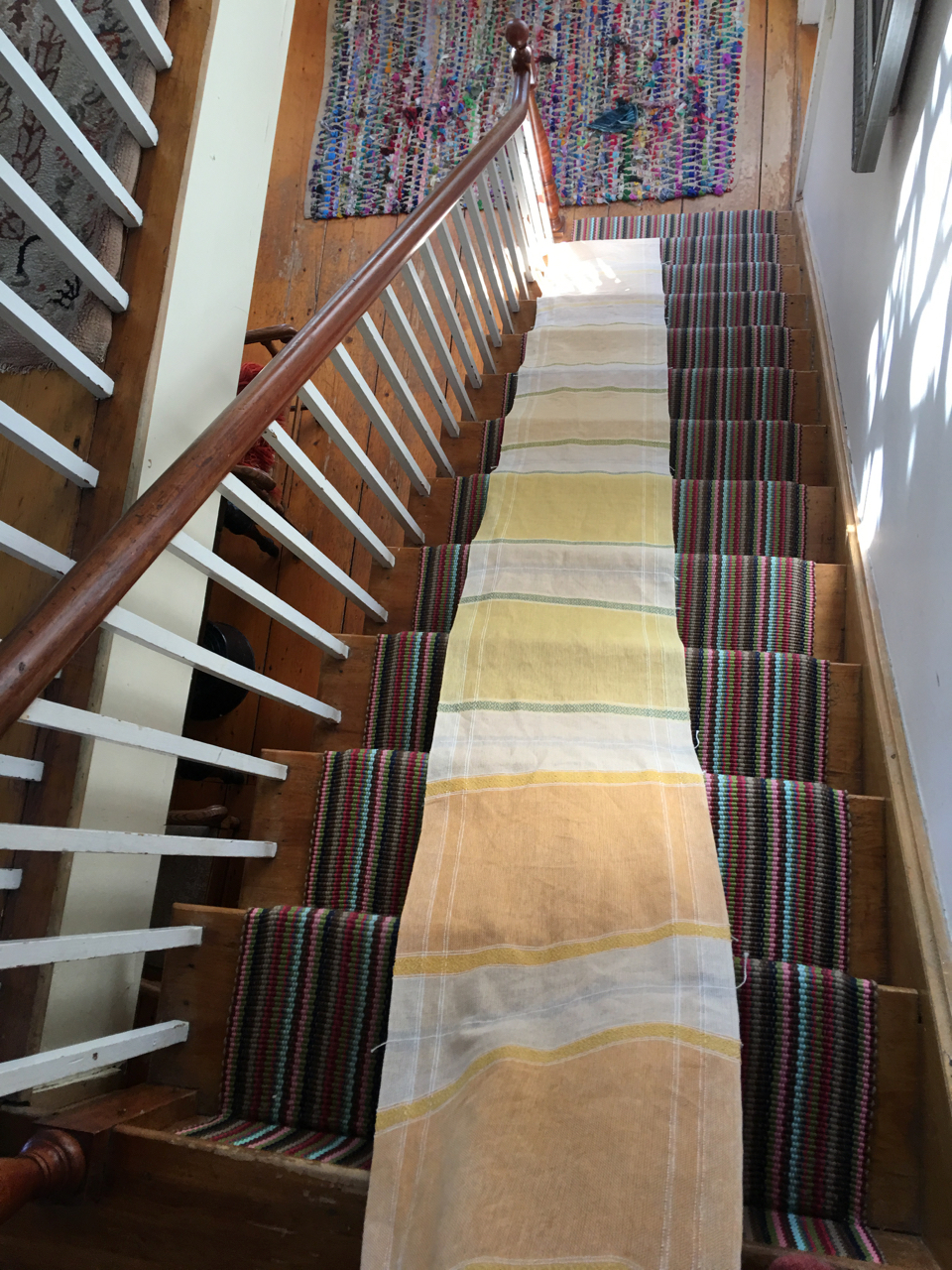 Napkins off the loom
Napkins off the loom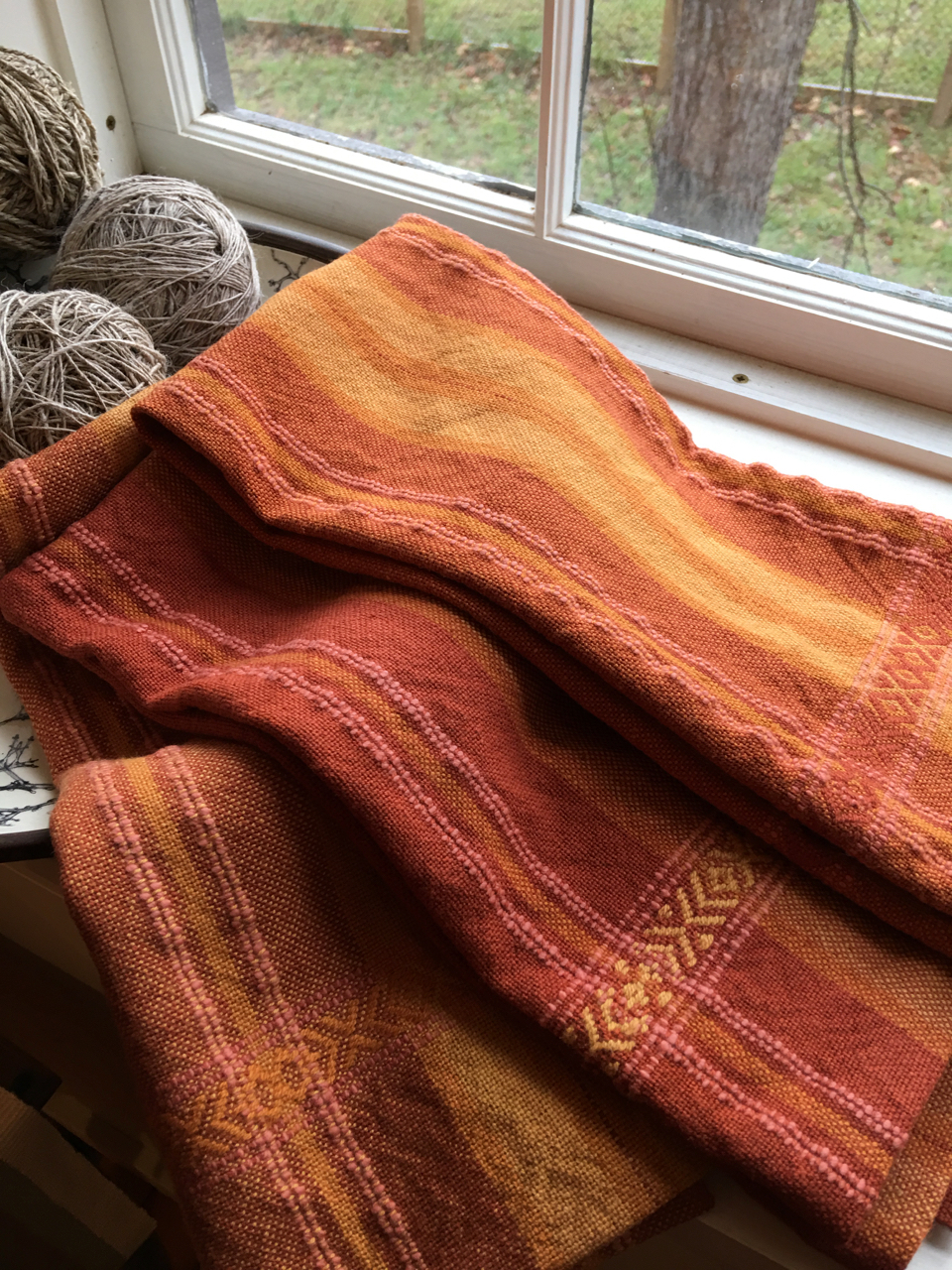 Cottolin and Slub Cotton Towels
Cottolin and Slub Cotton Towels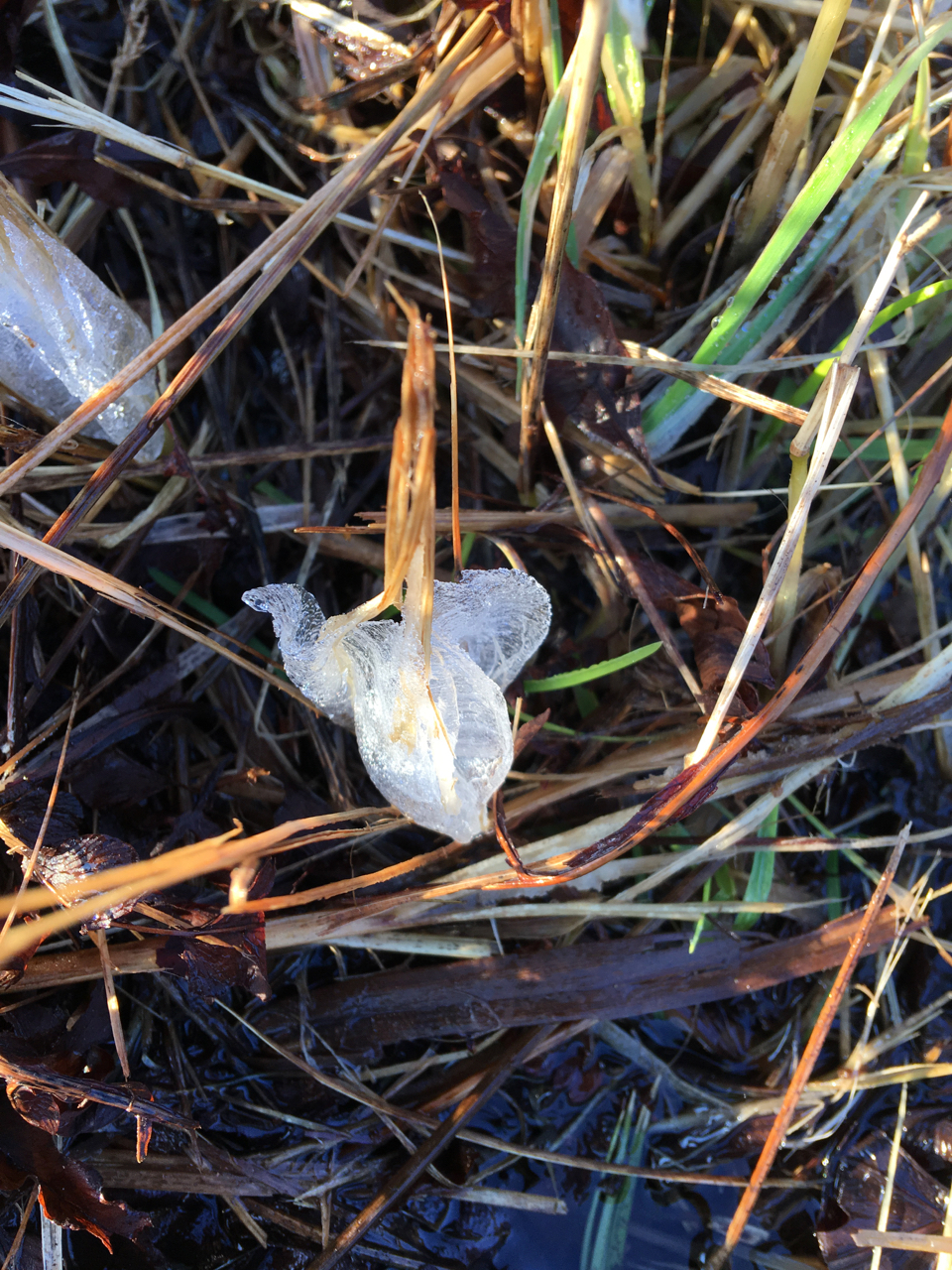 Ice Flower
Ice Flower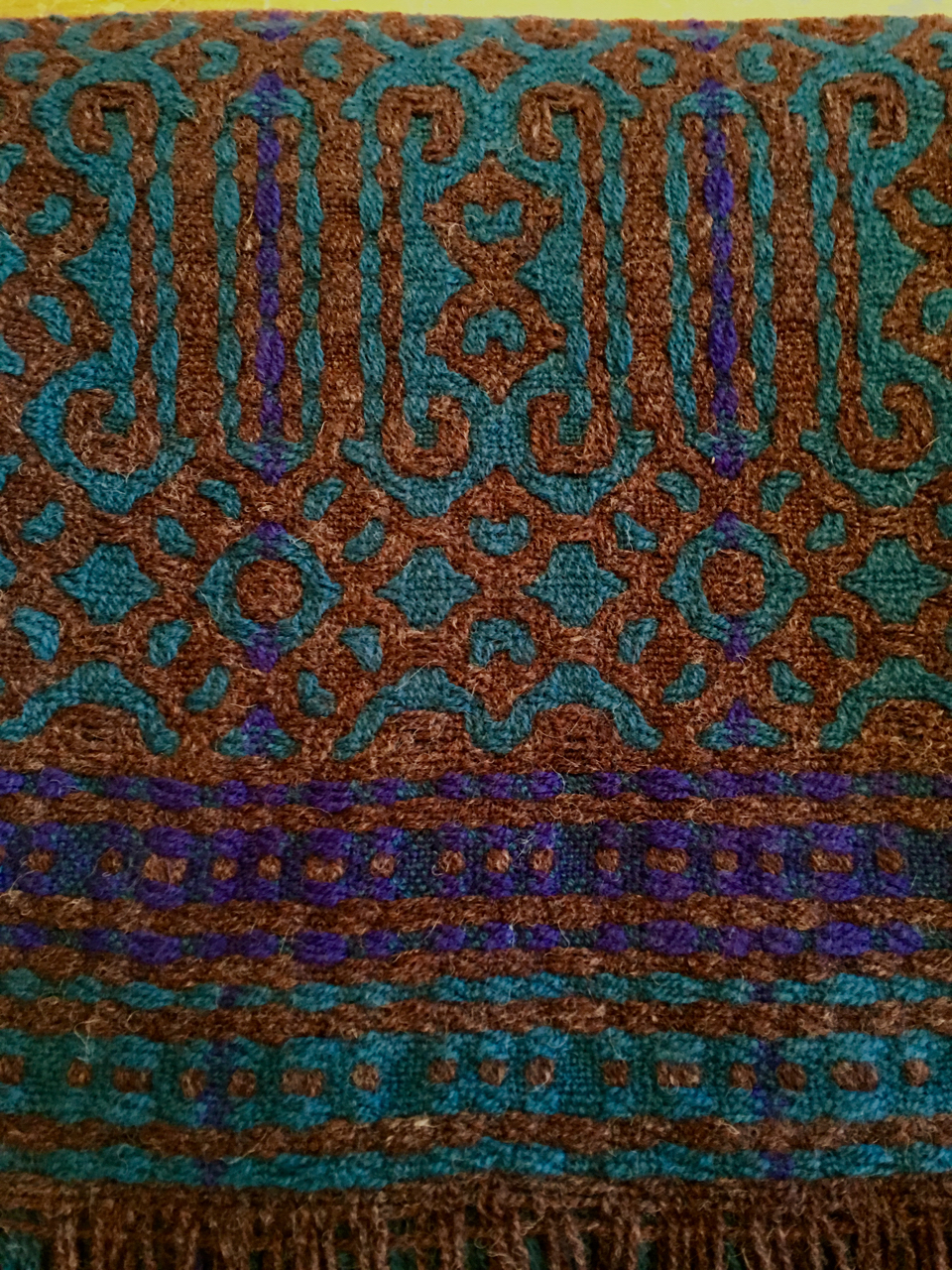 Tuna Blanket finally off the Toika
Tuna Blanket finally off the Toika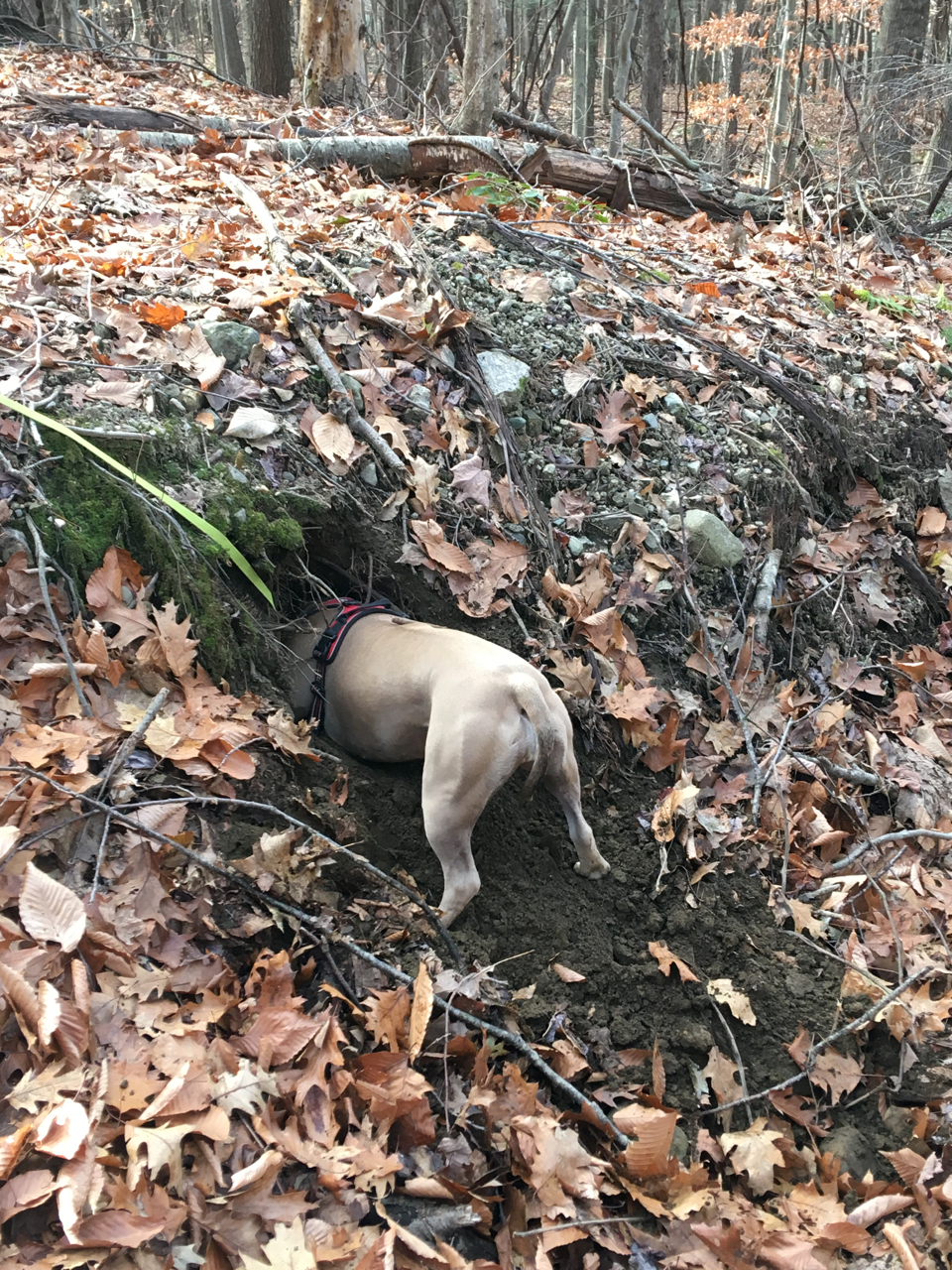 Fiona finding her joy
Fiona finding her joy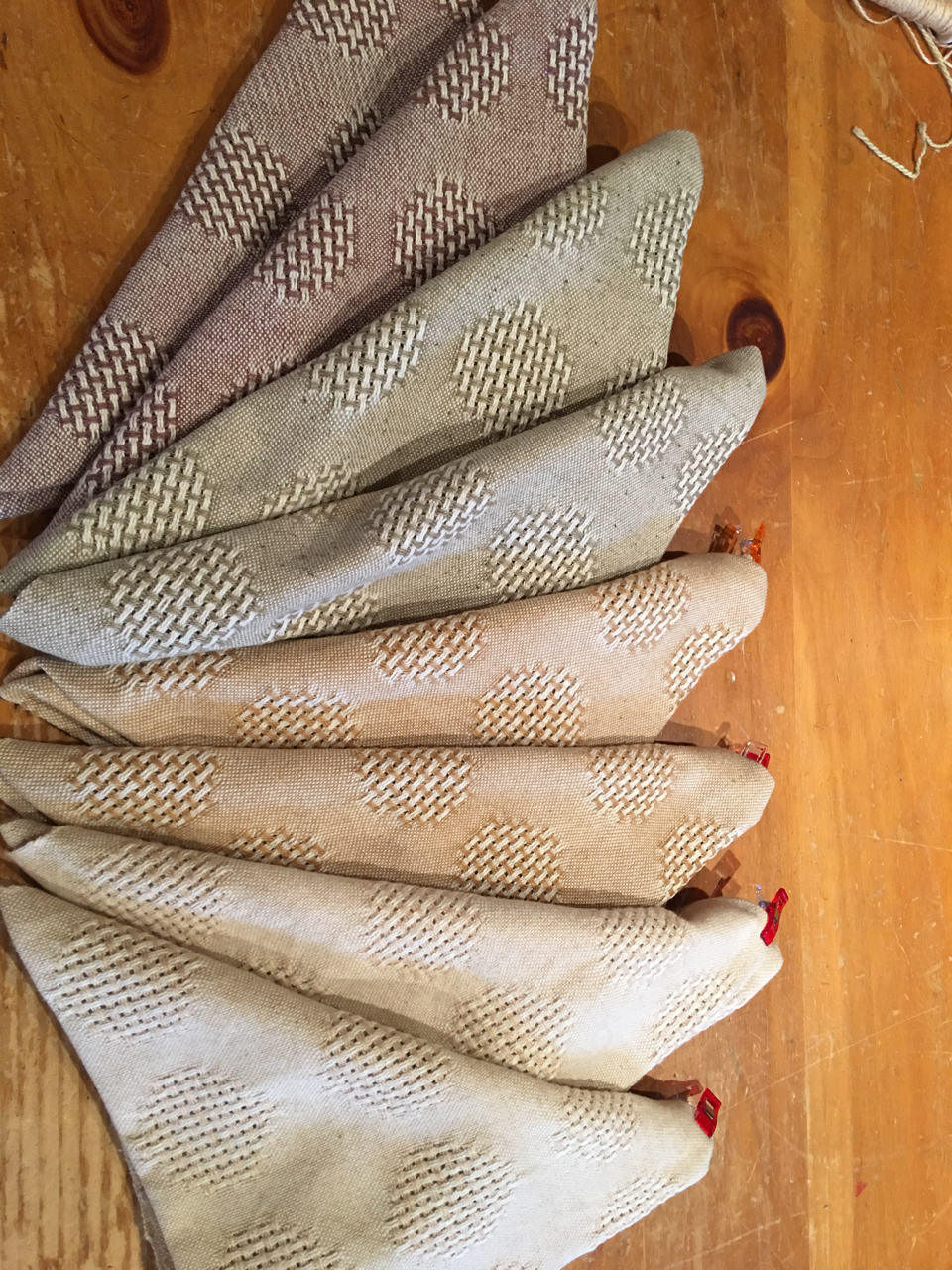 Ugly Napkins . . . fail!
Ugly Napkins . . . fail!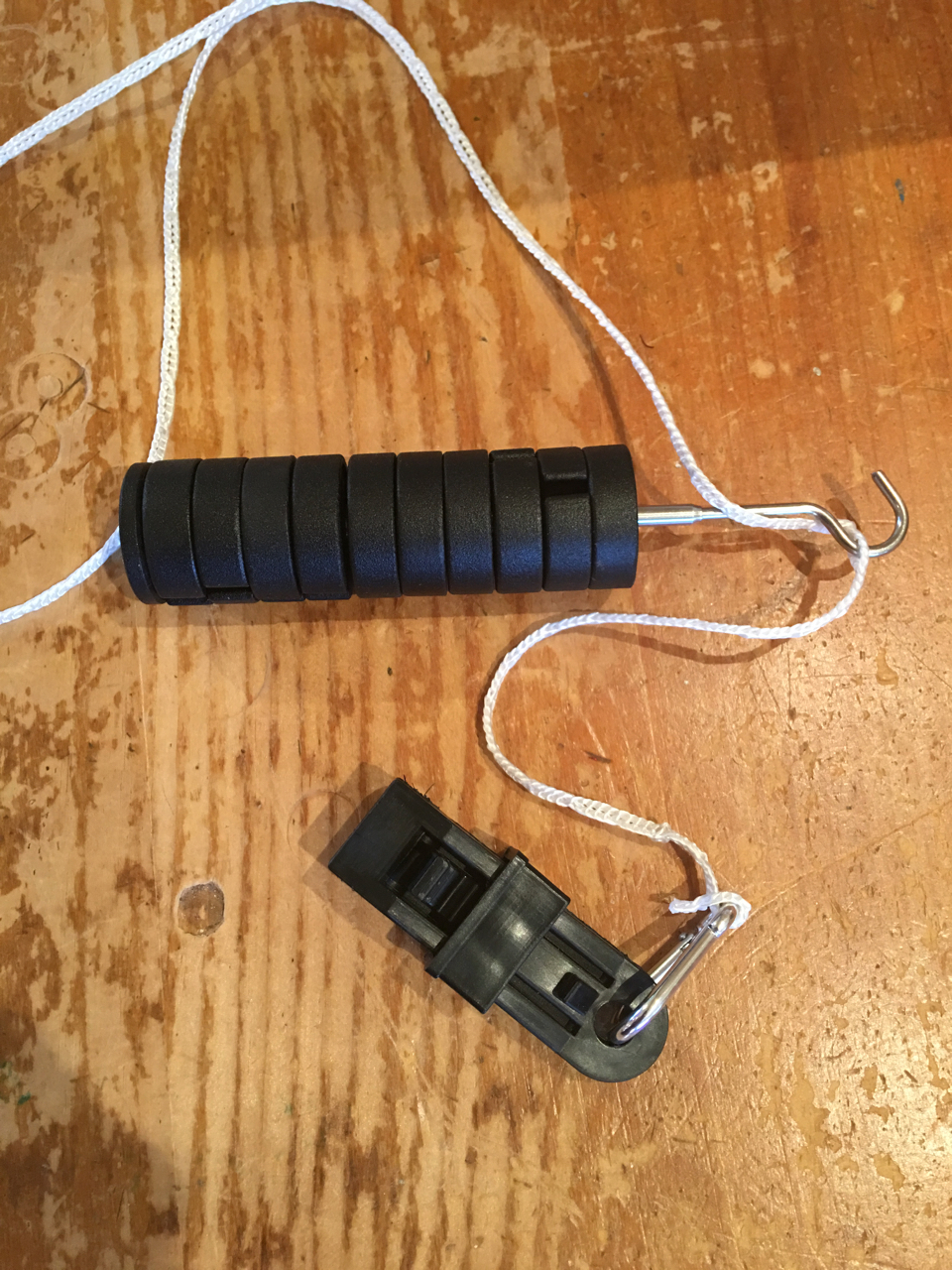 Cool scientific add-a-weight for improvised temple
Cool scientific add-a-weight for improvised temple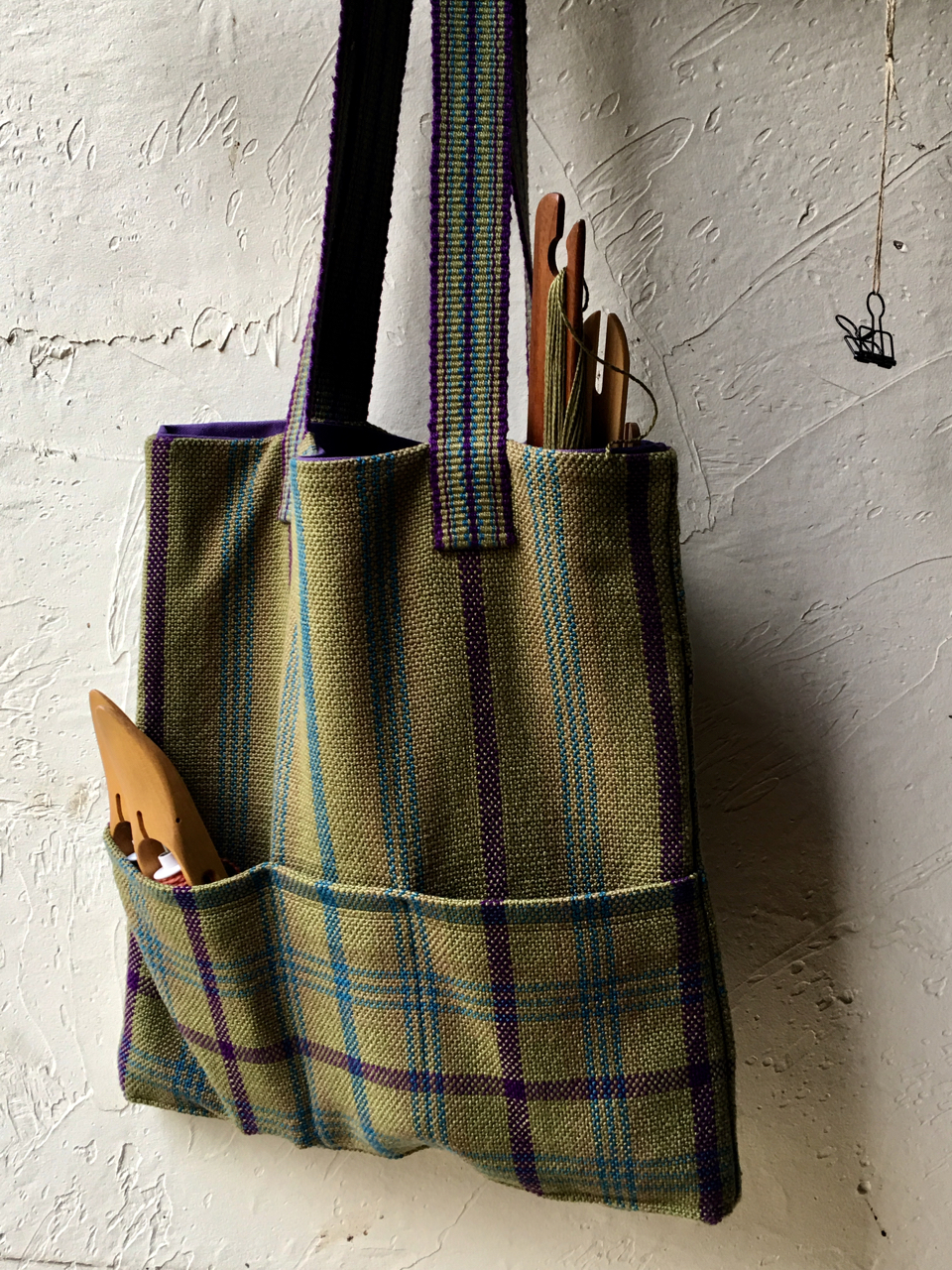 Rigid-heddle Tote
Rigid-heddle Tote
Do you know the art class exercise, where they make you draw a chair? You are asked to draw a chair that has been placed before you. You draw. Then you are asked to turn the chair upside down and draw it. It is kind of a parlor trick because inevitably the drawing of the upside-down chair is much better. The reason for this is because if you’re asked to draw a chair, your “chair assumptions” take over, i.e. “I know what a chair looks like” and you stop observing. If trying to draw an upside-down chair, you actually have to look and draw because most of us don’t have a firm image of an upside-down chair in our minds. I think hand-woven cloth may have a similar effect. There is a quality about the best of it that doesn’t quite fit our assumptions about “cloth”. It is mysterious. This goes double for cloth that is handspun and handwoven. And maybe this is why hand-woven plain weave cloth is often magical to me. Because I don’t go into structure analysis mode, instead, I simply marvel at the clothy-ness of it.

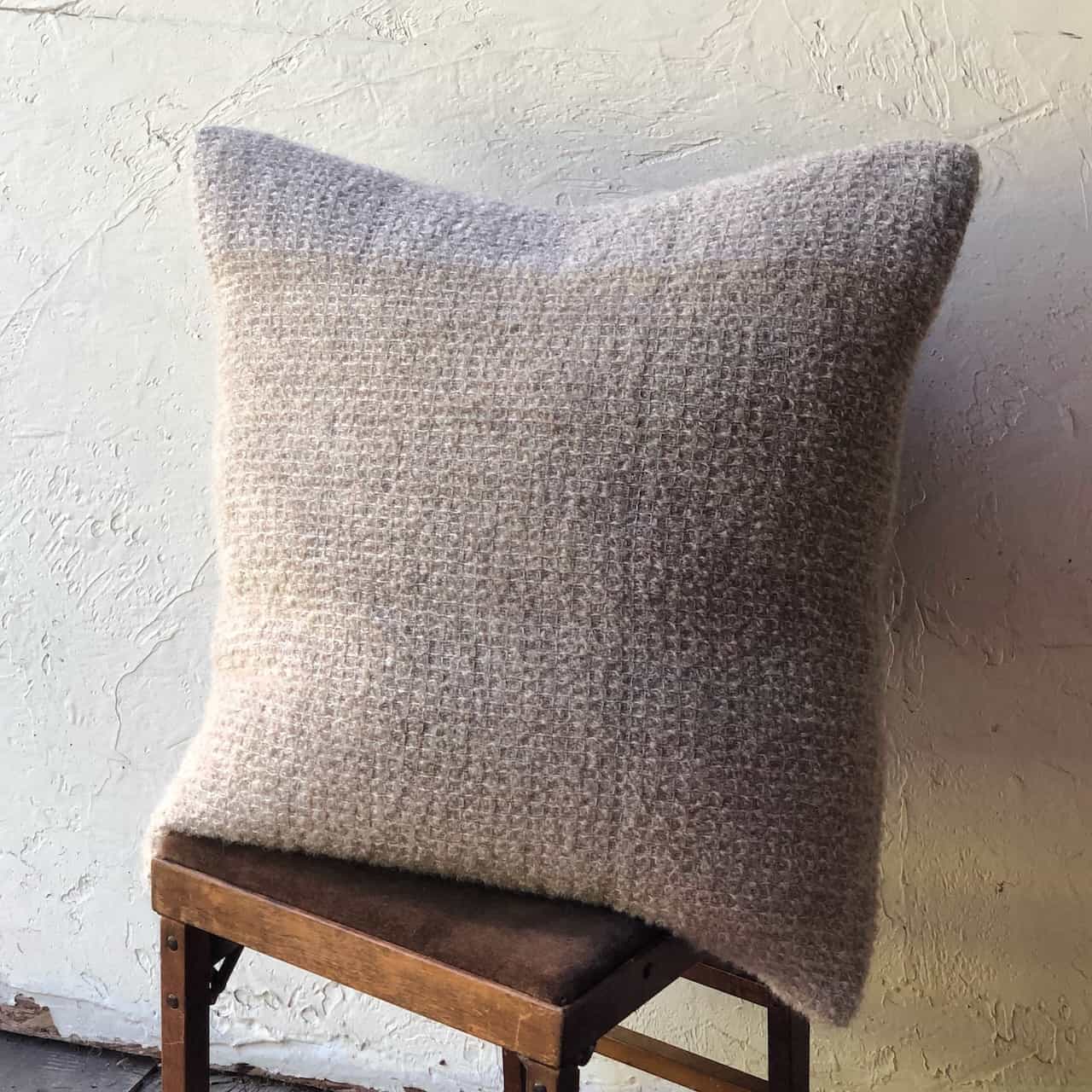
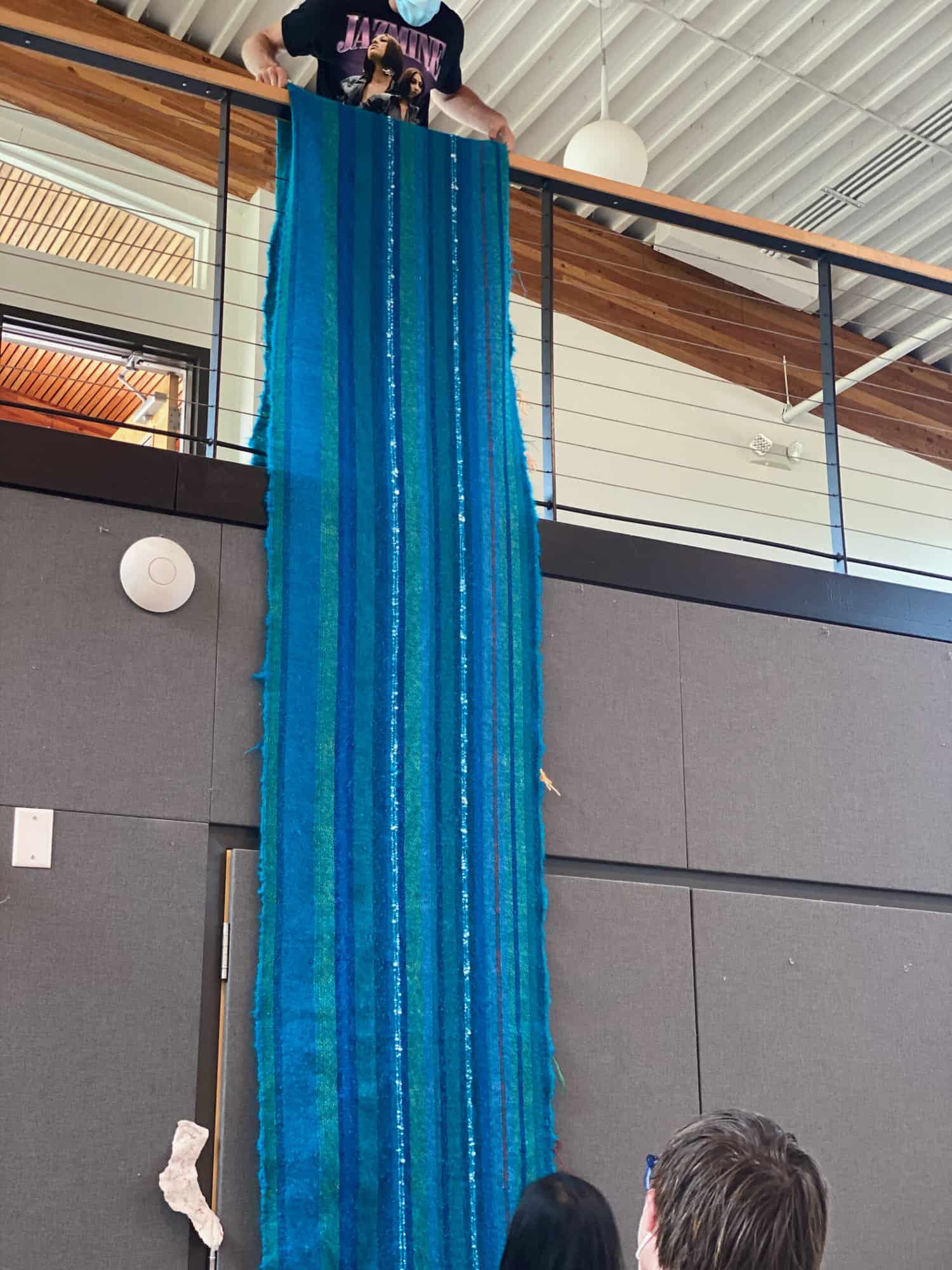
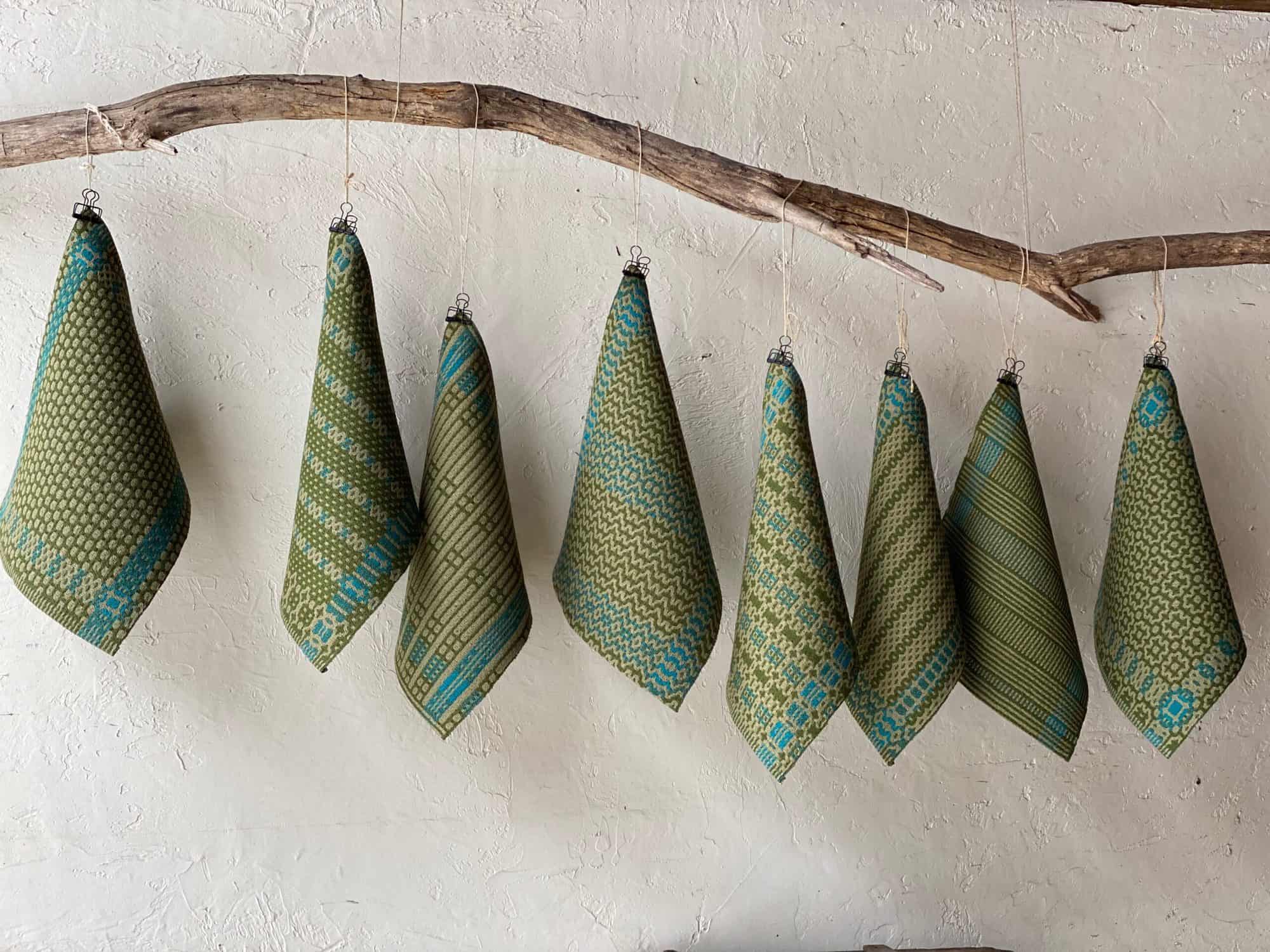
Linda Shinn
Wonderful!
Elisabeth Hill
Thanks Linda – food for thought from food goddess Nigella!
Marcia Cooke
What a great post! Lots to ponder. But seriously, Lisa, if those failed napkins need a home, I have a whole set of towels just off the loom with a similar huck motif, and would be happy to take them off your hands
Elisabeth Hill
I’d be happy to be rid of them!! I am in the middle of doing a series of blog posts for Handwoven – the first of which will be about “unsuccessful” projects . . . Sadly, it wasn’t planned that way, but it’s a good topic, and I plan to try to over-dye them with indigo (kinda dumb since they are color-grown cotton and dyeing them will defeat the original purpose), but I will gladly hand them over (you may regret it!) after my experiments with saving the uglies.
Gail Caron
That bag is gorgeous. Are the pockets done with doubleweave?
I am also wondering what Fiona is digging after. I hope she wipes her feet.
Elisabeth Hill
Hi Gail,
The isn’t DW – it a very simple RH project using 3/2 cotton. Part of the warp is woven as-drawn-in to get the plaid (well sort of – I had to remove picks to try to square it) and the rest is just woven using 1 color in the weft. I then assembled it so that the back is plaid, and the front is striped with the pocket cut from the plaid part of the fabric. I love sewing totes – because I am a serious schlepper and use tote bags as organizational tools, but also because they are sooo easy to sew!! This one is lined because it makes it much sturdier, but mainly because it is way easier to sew with a lining than without!
I never know what little critters Fiona detects while I stroll around obliviously. She will leap through the air and then stick her head into a tuft of grass all the while my poor human senses see/hear/smell nothing. The only time I have a chance is in new snow when I can see all the little tracks that are invisible during most of the year, then I can see what see smells all year round.
Angela Feltes
I love going back to plain weave. Somehow it is like cleansing my palette for what comes next. PS. I don’t think those napkins are ugly:)
Elisabeth Hill
Hi Gail,
The isn’t DW – it a very simple RH project using 3/2 cotton. Part of the warp is woven as-drawn-in to get the plaid (well sort of – I had to remove picks to try to square it) and the rest is just woven using 1 color in the weft. I then assembled it so that the back is plaid, and the front is striped with the pocket cut from the plaid part of the fabric. I love sewing totes – because I am a serious schlepper and use tote bags as organizational tools, but also because they are sooo easy to sew!! This one is lined because it makes it much sturdier, but mainly because it is way easier to sew with a lining than without!
Elisabeth Hill
Hey Angela – I think the napkins are victims my imagination. I imagined such beauties and then their sad cousins rolled off the loom and I just can’t love ’em. I adore your idea of PW as a palate cleanser!! I definitely need it to remind myself what I fundamentally love about cloth.
Claudia ( teacatweaver)
Spot on!
Elisabeth Hill
Hey Claudia,
Thanks for the comment. I feel like I have to concentrate mightily to get that strong sense of the world around me now, but I sure remember when all reality was “more so” when I was a kid.
Cynthia Lazzaretti
Thank you so much for sharing your thoughts.
I had never tried to put into words what makes my heart leap with Art. This was wonderful!.
And Tuna blanket? Absolutely Fabulous! My next challenge is DDW, and this is the ‘clothiest’ I’ve seen yet. Kind Regards, Cynthia
Elisabeth Hill
Thanks Cynthia,
“clothiest” is the best compliment ever:)))
Jeannine
I would love more info on your beautiful “Tuna Blanket”. It is stunning and I would love to attempt to weave something half as beautiful.
I was so inspired by your blog and making clothier cloth. I’m off to the drawing board to design a clothier cloth towels in colors I generally do not use.
Thank you for inspiring me.
Charlene Schurch
Thank you, a very thought provoking post. Inspires me to use some of my hand spun cotton sooner rather than later.
Elisabeth Hill
Hey Charlene – yes! Me too, I’ve been spinning in the evenings and keep mulling the possibility of a hand-spun/hand-woven blanket. Something to make the long winter evenings exciting (clearly “exciting” is a relative term:))
Claire
Yes! I love this concept and I think that clothier cloth has been one of my unconscious aims with my weaving and knitting too I’ve been using my handspun a fair bit recently and I get a lot of satisfaction from the texture.
I’ve been using my handspun a fair bit recently and I get a lot of satisfaction from the texture.
I love that repp weave table runner above and the tuna blanket is divine!
Elisabeth Hill
Thanks Claire,
It’s great to hear from you again. I agree that there are so many ways that hand-spun/handwoven/knitted cloth reads clothier. I still haven’t been able to codify the elements of clothier cloth entirely, but the slightly uneven, springy nature of a lot of hand-spun is something that always works for me.
Cally
I love your reflections on the clothiness of handwoven cloth. I am always interested in the response of others to cloth from my loom, because they seem to approach with the assumption that ‘handwoven’ is kind of an insult – that it signifies heavy, lumpy, woolly etc – so when they touch something that is soft and light they are startled into stopping, looking, handling, questioning.
Elisabeth Hill
Hi Cally,
Thanks for the comment. At a recent guild talk a locally renowned weaver said that she doesn’t distinguish between handwoven and machine-woven cloth, and that the only distinction she makes is between good and bad cloth. I get her point – there is no question that there is “bad” cloth of both handwoven and machine-woven varieties, but because I am such a handwoven fan girl I was surprised to hear from you that “handwoven” carries a stigma. Luckily we have you on the front lines courageously fighting to end that unjust prejudice!